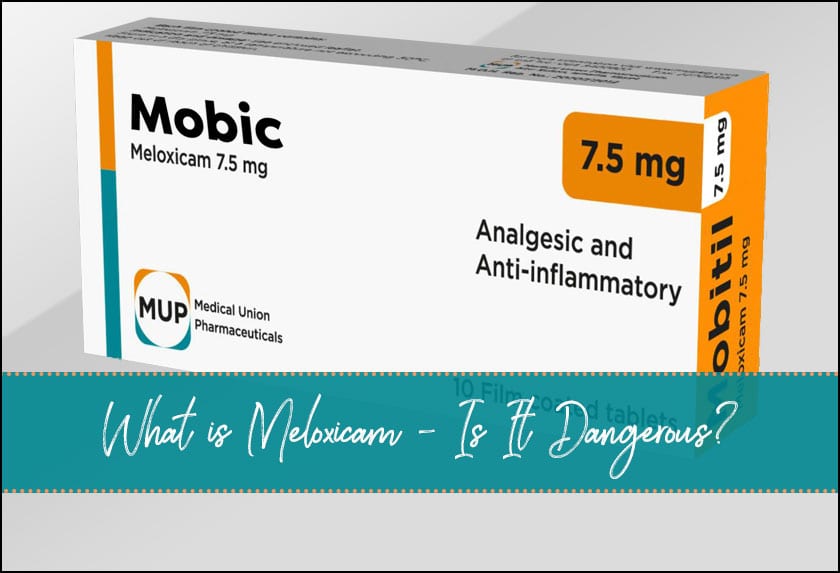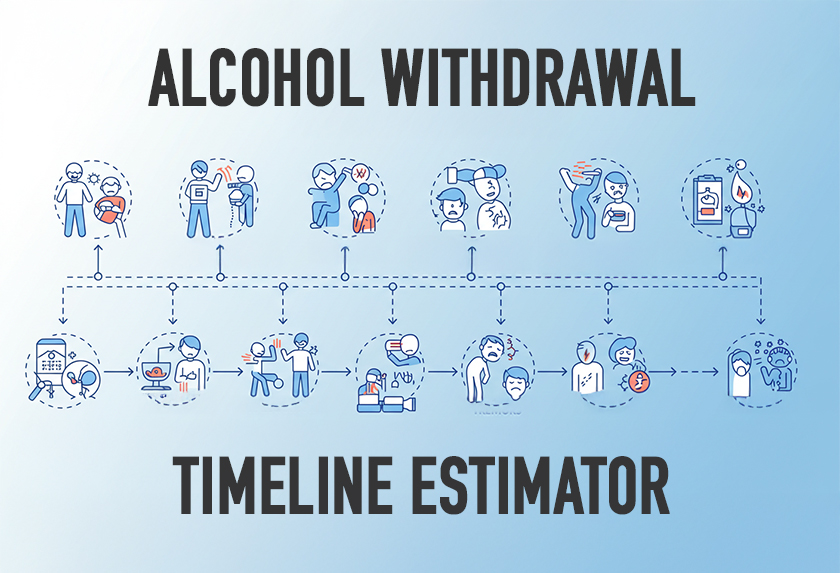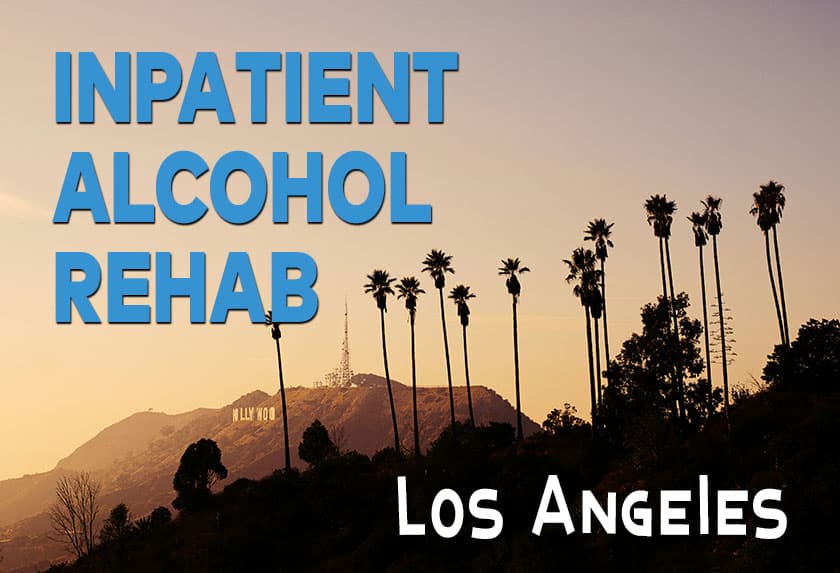With America’s opioid crisis making headlines, more and more people are searching for non-narcotic solutions to treat physical pain.
Physical therapy, exercise, diet, chiropractic care, and acupuncture are all possible long-term solutions – but what can someone take to relieve acute pain as they recover?
In many cases, especially those involving menstrual or joint pain, over-the-counter medications like Motrin or Advil simply aren’t strong enough to cut it.
Meloxicam, also known as Mobic, may be a viable option for these individuals. What is meloxicam and what is it used for? Is it dangerous and does it come with addiction potential?
What is Meloxicam?
Mobic is a non-steroidal anti-inflammatory drug (NSAID) found under the brand names Mobic and Vivlodex. Like other NSAIDs, Mobic reduces inflammation and the associated pain by preventing the body from producing hormones that trigger inflammation.
The human body produces two main types of inflammatory hormones: COX-1 and COX-2. Some NSAIDS work by blocking the production of both COX-1 and COX-2. These are called non-selective NSAIDs. Other NSAIDs only block the production of COX-2. These are known as partially-selective NSAIDs.
Mobic is a partially-selective NSAID. Even though Mobic only blocks one inflammatory hormone, this doesn’t mean it’s any less effective for treating moderate pain. It does, however, carry a similar risk for gastrointestinal issues.
What is Meloxicam Used For?
Doctors will often prescribe Mobic to treat arthritis – both osteoarthritis and rheumatoid arthritis. A doctor may also prescribe Mobic for menstrual pain if a patient hasn’t responded well to other NSAID prescriptions like naproxen.
Essentially, a doctor may prescribe Mobic for any type of pain or swelling caused by inflammation.
Meloxicam Vs. Ibuprofen
Mobic and ibuprofen both fall under the umbrella of NSAIDS – so they’re both non-steroidal anti-inflammatory drugs.
However, anyone can easily pick up a bottle of ibuprofen on their lunch break at the nearest pharmacy. Mobic, on the other hand, requires a prescription.
When it comes to meloxicam vs. ibuprofen, both drugs work in unique ways inside the body. Ibuprofen like Motrin or Advil – whether OTC or prescription strength – reduce pain by blocking both inflammatory hormones inside the body: COX-1 and COX-2. In other words, they’re non-selective NSAIDs.
Mobic, however, is a partially-selective NSAID so it only blocks COX-2.
Is one more effective than the other? Studies suggest that there isn’t much difference between non-selective and partially-selective NSAIDS in terms of pain reduction.
There’s some bad news, too. Most partially-selective NSAIDs are less likely to cause GI issues like stomach bleeding. Suppressing the production of COX-1 can lead to stomach bleeding and Mobic only blocks COX-2. However, studies show that despite this, Mobic may carry an even higher risk of GI symptoms than ibuprofen.
Unlike most varieties of ibuprofen which suggest taking a dose every 4-6 hours, patients can only take one Mobic pill each day. Remember that increasing a dose without consulting a doctor can increase the risk of developing negative – and often dangerous – side effects.
Meloxicam Side Effects
The majority of people who take NSAIDs like Mobic don’t suffer serious side effects – but that doesn’t mean patients should ignore the risks.
Most common side effects are pretty mild and include
- Upset stomach
- Dizziness
- Diarrhea
If someone taking meloxicam experiences and of the serious side effects below, call a doctor or get medical attention immediately.
- Persistent or intense headache
- Changes in mood or mental health
- Unusually stiff neck
- Bruising easily or bleeding problems
- Signs of kidney problems
- Symptoms of heart attack or heart failures like chest pain or sudden weakness on one side of the body
- Signs of decreased liver function
- Symptoms of stroke-like slurred speech
Allergies to NSAIDs like Mobic and Naproxen aren’t common but they happen and are serious. If someone experiences the symptoms below while taking Mobic, they should stop taking the medication and talk to a doctor or seek medical attention immediately.
- Rash
- Hives (may first notice symptoms on hands)
- Stuffy or runny nose
- Wheezing
- Itching or swelling – especially of the face or throat
- Extreme dizziness
- Sore throat
- Breathing problems
Meloxicam and Gastro Intestinal Bleeding
All NSAIDs carry a significant risk of stomach bleeding – yes, even unassuming Motrin and Advil.
Taking Mobic in large doses for long periods of time can increase the risk of stomach bleeding and other GI symptoms. However, it’s important to keep in mind that stomach bleeding can occur at any time without warning in anyone taking NSAIDs. If left untreated or if a person continues to take NSAIDs, the bleeding can turn fatal.
Older adults, smokers, and drinking while taking NSAIDs all increase a person’s risk of stomach bleeding as well.
Many people don’t realize that OTC drugs marketed for specific conditions like period pain, colds, or allergies may also contain a generic NSAID. Carefully monitoring any OTC medications while taking Mobic is crucial to avoid exceeding the recommended dose of any NSAID. Remember not to take any OTC forms of ibuprofen while taking Mobic as well.
Meloxicam and Heart Attack
NSAIDs like Mobic constrict blood vessels across the body. NSAIDs can also cause the body to retain water and salt. Weight gain from water retention is common when taking Mobic.
Both fluid retention and restricted blood vessels can unfortunately also increase the risk of high blood pressure. High blood pressure is a crucial precursor to heart disease and heart attack.
Some good news: while studies have found that ibuprofen increases a person’s risk of heart problems, Mobic does not. The key is to stay within the recommended daily dose of Mobic.
Mobic and Women’s Health
Doctors may prescribe meloxicam to women for period pain which makes it important for women to understand these special considerations.
Mobic can harm a fetus during the final trimester. If someone has a previous Mobic prescription from her pre-pregnancy days, she should not continue to take it without talking to her doctor.
Many women may not realize that Mobic can interfere with ovulation. In some cases, the drug can delay the release of an egg from the ovaries. Any women undergoing fertility treatment, trying to become pregnant, or using their cycle to prevent pregnancy should voice these issues to her doctor.
Mobic can also pass from mother to baby through breastmilk and the drug is not approved for anyone under the age of 2. Pregnant and breastfeeding women should not take Mobic.
Mobic Interactions
Mobic interacts with many medications. Doctors should know if a patient is taking the following
- Aspirin
- NSAIDs or ibuprofen
- Selected nephrotoxic agents
- Drugs that affect growth hormones
- Diuretics or constipation medications
- Lithium
- Blood thinners
- ACE inhibitors and blood pressure medications
- Diabetes medications
- Arthritis medications
What is Meloxicam’s Abuse Potential?
Mobic is an excellent alternative to narcotics for pain because it doesn’t carry the same risk for addiction.
People taking Mobic or other NSAIDs don’t experience the same euphoria or high that drugs like Vicodin or Percocet deliver. It’s true that dizziness is a common side effect of Mobic but this is extremely mild, short-lived, and not a feeling worth chasing for most people.
However, this doesn’t mean that addiction doesn’t happen. Any pill or substance has the potential to cause some form of dependence and addiction.
If someone was prescribed Mobic for acute pain like a back injury, they may continue to take the drug even after their symptoms have subsided. People may also notice their pain returns or becomes more widespread if they stop taking Mobic.
The FDA recommends that doctors avoid prescribing Mobic to patients with a high risk of alcohol or drug abuse or potential for psychological addiction.
It’s worth noting that medication overuse for headaches is a real thing and a growing problem. Taking NSAIDs like Mobic for long periods of time can cause rebound headaches if a person stops taking them abruptly. These headaches would technically qualify as a withdrawal symptom of dependence.
Withdrawal from Mobic won’t look or feel anything like withdrawal from narcotics or alcohol, but it may include pain and headaches.
Is Meloxicam Better Than Opioids?
Mobic has a much lower abuse potential than opioids because it doesn’t produce a high. Mobic does, however, effectively treat pain attributed to inflammation so it’s an excellent alternative to opiates.
Meloxicam overdose is also less common. According to the Centers for Disease Control and Prevention, 130 people die from illicit and prescription opioids every day in the United States. Meanwhile, deaths directly attributed to Mobic are extremely rare.
Patients can mitigate stomach bleeding and other severe risks of Mobic by closely monitoring any side effects and seeking medical attention as soon as possible.
At the same time, Mobic is still technically a pain killer and this leads to confusion on the street. People seeking a high may not realize that Mobic doesn’t produce any euphoric effects. If they take the drug and don’t “feel anything,” they could continue to take more and experience dangerous side effects.
NSAIDs are also a common home remedy for hangovers. Taking Mobic and other NSAIDs after a night of heavy drinking, especially on a routine basis, can increase the risk of stomach bleeding and heart problems.
Can Someone Overdose on Meloxicam
Mobic is a prescription drug with serious side effects. Although rare, overdose on Mobic can cause fatal symptoms like stomach bleeding. An acute overdose of NSAIDs like Mobic may include:
- Extreme fatigue or lethargy
- Dangerously high blood pressure
- Stomach bleeding
- Vomiting and nausea
- Kidney failure and associated symptoms
- Convulsions
- Slowed heart rate
- Swelling in the face or throat
Remember that unintended misuse can also cause an acute overdose of Mobic. Anyone taking Mobic should avoid taking any other medications that contain NSAIDs like Motrin and Advil. Make sure to read the ingredients of all OTC drugs for period pain, colds, and allergies to ensure they don’t contain NSAIDs.
The Bottom Line
When taken under the guidance of a doctor, Mobic is a very safe alternative to opioids and other dangerous prescription pain killers. Meloxicam is effective for treating pain from inflammation but it doesn’t produce a high like other drugs.
However, Mobic doesn’t come without risk. Misuse – even unintentionally – can happen and produce serious side effects. Contact an addiction specialist to talk more about how to approach a situation that involves someone abusing Mobic.





